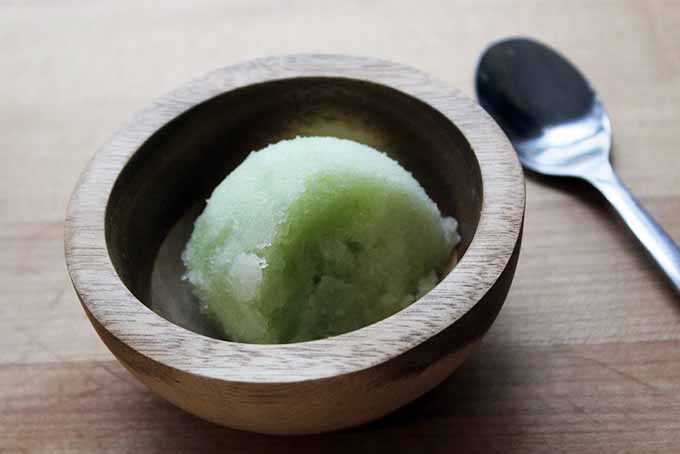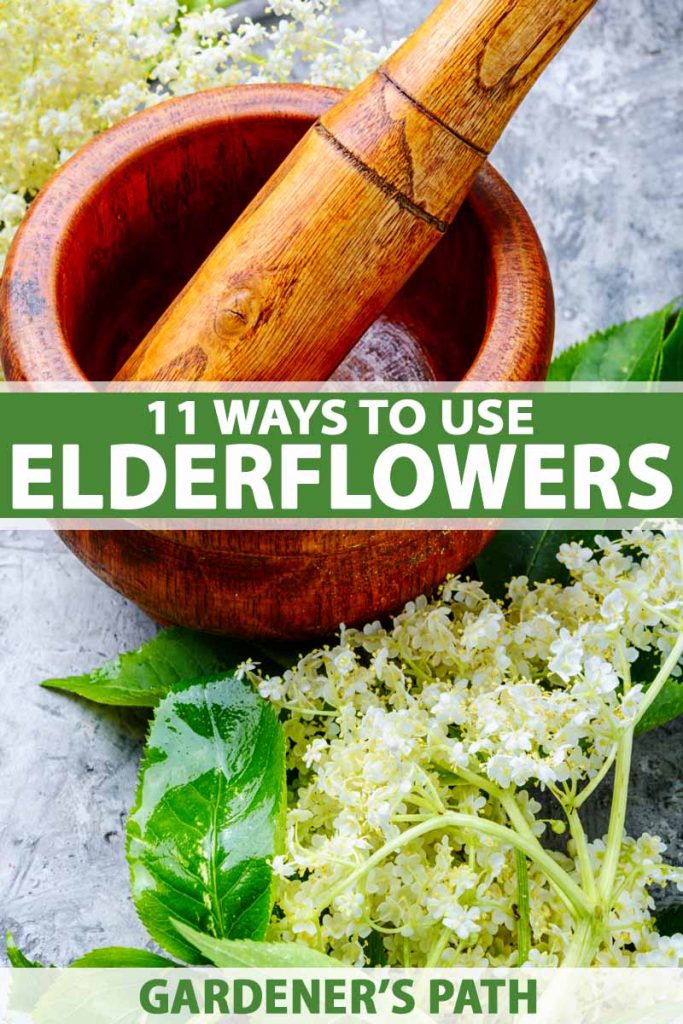You may have heard talk about the benefits of elderberries, or even come across elderberry syrup on the shelf of your local health food store. But you likely never heard anything about the flowers.


We link to vendors to help you find relevant products. If you buy from one of our links, we may earn a commission.
Often overlooked, the lovely little white or yellow blossoms of the magical elder shrub are also edible and medicinal, with some very special benefits of their own.
These enchanting little white or yellow clusters of flowers emit a summery sweet fragrance. The flower essence is said to instill a sense of youthfulness, vigor, and restore inner strength.
These delightful blossoms have a long history of medicinal use and are often used to flavor food and drinks. Read on to learn about their miraculous properties and some of the many ways you can use elderflower.
Medicinal Benefits
Both the berries and the flowers of the elder plant have been used for medicine for thousands of years. While both have similar affinities for boosting the immune system and fighting off infection, elderflowers have some additional unique uses.


As an immune stimulator, elderflower tea can provide soothing relief for acute cold systems.
The blooms are a key component of a traditional tea blend taken to reduce fever. A concoction of elderflower, yarrow, and mint is a great fever fighter, and was often used historically for measles and chickenpox.
Blooms can also be used to treat conjunctivitis and soothe red itchy eyes, reduce pain and swelling in acute joint inflammation, and relieve toothaches. They are natural antihistamines, and when taken prior to the appearance of pollen, can ease symptoms of seasonal allergies.
As a nervous system support, it is said they have the capacity to heal deep grief, helping to open people’s eyes to the magic of the world.
In vitro studies have even suggested that these flowers may help to reduce inflammation and blood sugar levels, potentially useful for addressing type 2 diabetes.
Harvesting and Preparing for Use
Depending on your climate, elder shrubs may bloom at various times over the summer between June and August.
To harvest, pick a warm dry day when the plant is in full bloom. Harvest during the morning or evening to keep the picked flowers from wilting in the sun or try to find a shady place to set them while you work.


Pluck off entire clusters of blossoms at the base, shake gently to dislodge any hidden insects, and place each bundle into your basket or bag.
If you don’t have any elder plants in your yard don’t worry! Just look for wild ones on the edges of streams, ponds, or along other disturbed edges such as fences or roads.
If you also plan to harvest the berries later in the season, pick flowers selectively, leaving some clusters intact here and there.
Once harvested, you can preserve for later use by drying and storing in tightly lidded jars in a dark place.
To dry, lay flowers on trays or mesh screen and leave in a dark, dry place for about a week.
When fully dry, make sure they are still a similar yellow or white color to when they were fresh. Browning can be prevented by avoiding light during the drying process.


If you prefer, you can also leave flowers attached to the stem while drying and hang in bunches in a cool, dark location. I often dry herbs in a back closet.
Caution
Before using for food or medicine, it is important to separate the flowers from the stems. Leaves, stalks, and roots of these plants are toxic and should not be consumed.
Ways to Use for Food and Medicine
There are so many great ways to use this enchanting herb. The following are a few ideas on ways to utilize them in food, medicine, and even cosmetics.
Try out a few of these suggestions or concoct your own recipes!
1. Tea
For relief from colds or flu, pour boiling water over fresh or dried flowers and steep in a covered container for 10 minutes. Mix in a spoonful of local honey and feel those pesky symptoms ease as you breathe in this steamy sweet beverage.


The cool tea can also be used as a mouthwash. Gargle and rinse to combat sore throats, toothaches, and abscesses.
2. Tincture
The flowers can be tinctured in alcohol for use as an herbal remedy for various ailments.
Just place crushed dried flowers in a jar, cover with 60 percent alcohol, and let sit in a cool dark place for three to four weeks, shaking daily.


Consult with a clinical herbalist and your doctor before starting any herbal medicine.
3. Salve for Inflammation Relief
Use a salve or lotion made from the blossoms to reduce inflammation and pain from sprains and strains.
You can incorporate other healing herbs such as calendula, comfrey, or st. John’s wort for additional support.
4. Soothing Eye Wash
Make an eye wash for relief from itchy eyes, conjunctivitis, or hay fever. Just make a batch of elderflower tea, let cool, and rinse!
You can also try soaking a washcloth in the cool tea and use as an eye compress.
5. Syrup
A syrup for fighting off colds, flus, and winter blues can be made with flowers of the elder tree as well as the berries. Or combine them for maximum benefit and flavor!


This article on elderberries includes an easy recipe for syrup (see unpublished elderberry harvest article) Just incorporate or substitute in the blossoms.
6. Cosmetics
Back in the Victorian era, elderflower water was often used as a skin cleansing lotion, believed to keep the skin young and free of blemishes.
Use of elder blossoms in cosmetics is beginning to make a comeback, and can often be found in lotions, oils, and body butters that claim to reduce wrinkles, soften skin, and slow aging.
7. Cordial
A cordial is a type of sweet soft drink that is historically popular in Western Europe and has been brewed since the Roman era.
Delightfully fragrant and sweet, this concentrated syrup can be added to drinks or even mixed into recipes such as cakes and pancakes.
To make a cordial, boil the flowers for at least minutes, strain, and add in equal parts sugar to the remaining volume of water. Including a splash of lemon juice and citric acid will help preserve the cordial and add a pleasant tartness.
To use in drinks, pour one to three tablespoons into a glass and add water, seltzer, tonic water, sparking wine, vodka, or gin.
Tip: Make a large batch all at once and freeze the extra for later use.
8. Cocktails
Try out a fun and unique cocktail. Simply mix the flowers with lemon or lime peel or lemon balm and infuse in vodka for a couple of weeks. Strain out the liquid, add sugar syrup, and let the concoction sit for two more weeks.


This refreshing spirit will certainly make a splash at your next party!
You can also experiment with other alcohol of choice. Personally, I love making elderflower gin and tonics!
9. Wine
This one is a classic! Elderflower wine has a distinctive crisp, floral taste, and is very pleasant chilled with a picnic on a sunny afternoon.
Here is the recipe I use:
Ingredients
- 1-pint elderflowers destalked
- 8 pints boiling water
- 3 lbs sugar
- Juice and zest of one lemon
- Half ounce of yeast
Directions
- Pour boiling water over flowers, lemon, and zest, and let it all infuse for three days.
- Strain out the solids and stir in sugar and yeast
- Ferment at room temperature until bubbling slows, stir, and let sit for 3 more days.
- Strain again and let age for a couple of months. Be sure to cover the wine but allow for air to escape so it does not explode!
For more tips, methods, and equipment for beginning wine making at home, check out this helpful article on our sister site, Foodal.
10. Cooking with Elderflower
Use the cordial and/or dried flowers in cakes, tarts, jams, pies, or pancakes!
The blossoms are great when balanced with tart fruits such as rhubarb. They are also delightful baked with strawberries and raspberries.


Light, floral, and delicious, these summer blossoms can really be incorporated in just about any dish. I have even seen recipes for elderflower yogurt!
Want to try something a bit more out of the box? Check out this recipe for a refreshing cucumber elderflower sorbet.
11. Herbal Vinegar
Steep the crushed herb in vinegar for about a month. Use your vinegar of choice. Apple cider, white wine, or champagne are all great options. Strain and use in salad dressings or sauces.
In similar fashion, you can also infuse elderflowers in honey or cooking oil. Use your imagination!
Taste the Magic
With so many ways to use and enjoy them, I can’t help being drawn to the intoxicating aroma and pleasant aura of elderflowers.
But don’t take my word for it, try out a few of the ideas above, and you may just become enchanted by elder magic too.
Do you have experience harvesting and using elderflowers? Share your ideas in the comments below!
And for more information on growing and using elderberries, check out some of our other guides:



